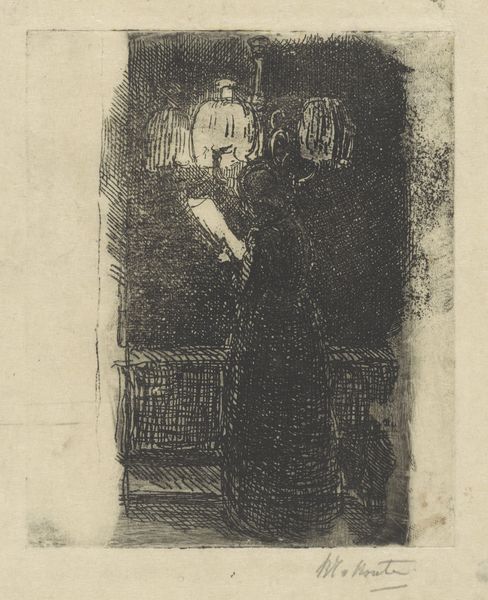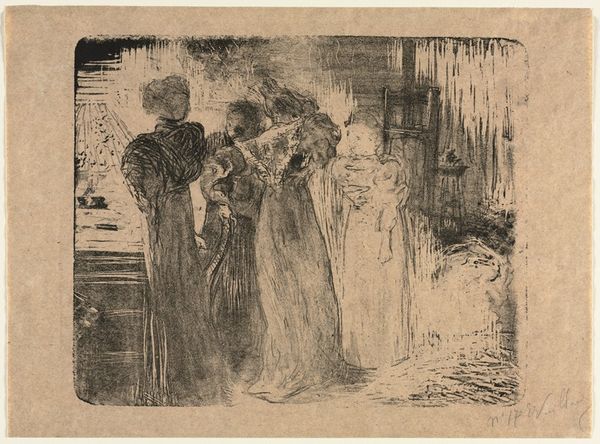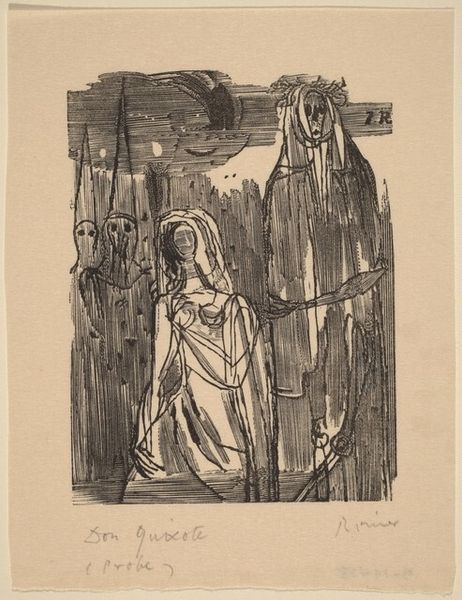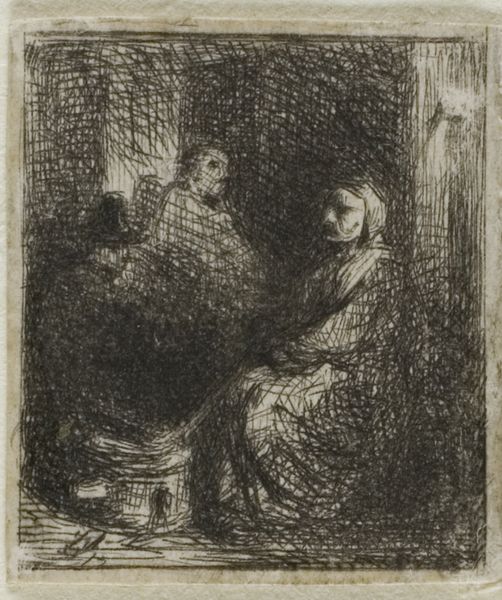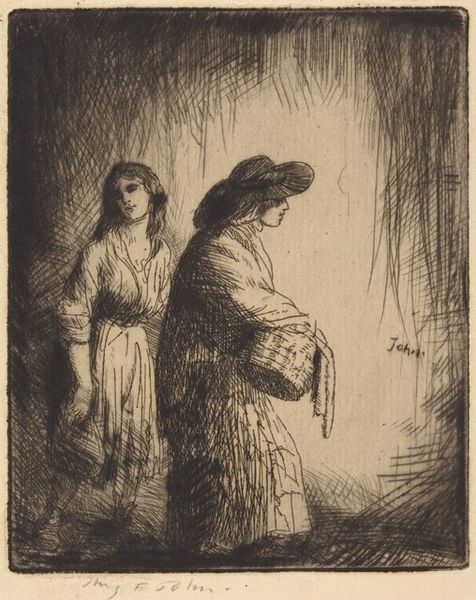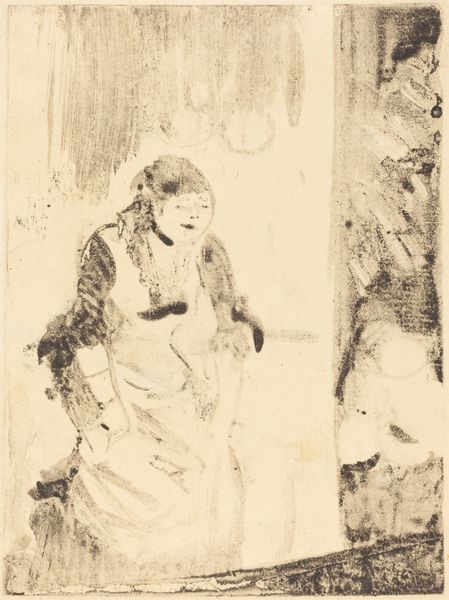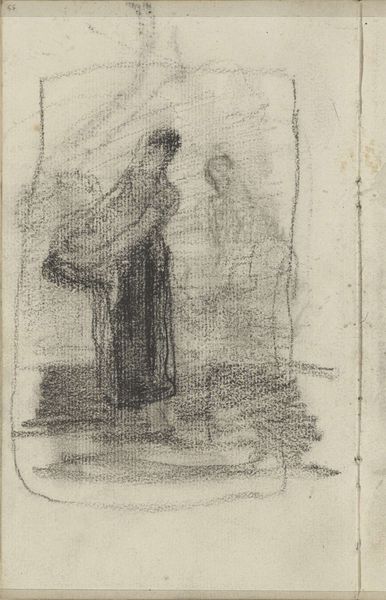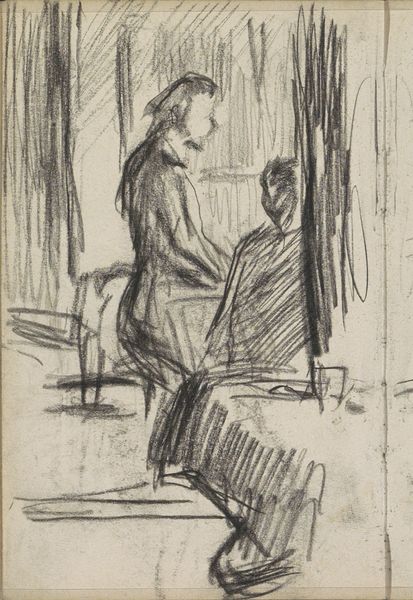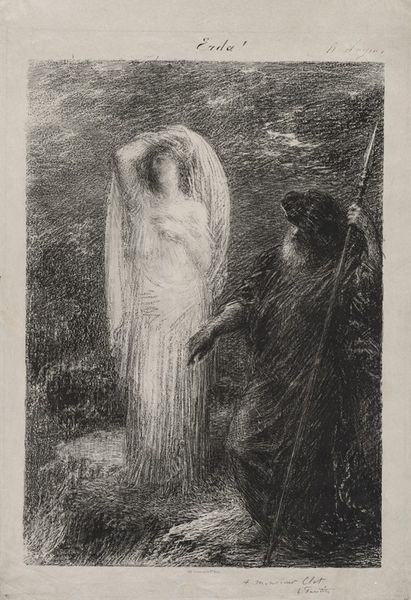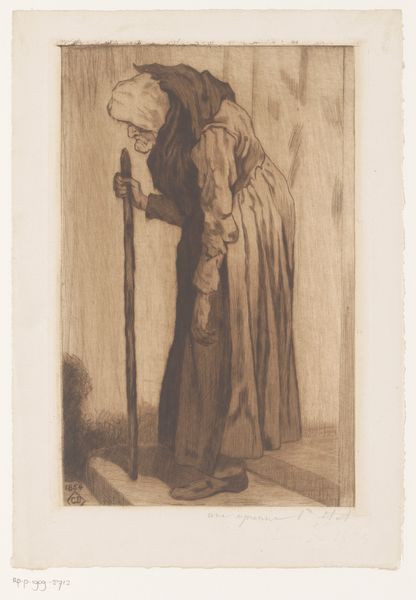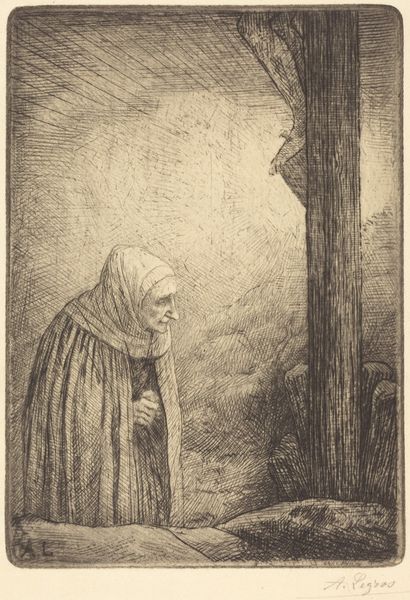
drawing, charcoal
#
portrait
#
drawing
#
charcoal drawing
#
figuration
#
symbolism
#
charcoal
Dimensions: overall: 65.5 x 49.5 cm (25 13/16 x 19 1/2 in.)
Copyright: National Gallery of Art: CC0 1.0
Editor: This is “Two Studies of Madame Lemmen,” a charcoal drawing by Georges Lemmen from 1885. The somber palette really sets a subdued mood. I’m curious, what socio-political themes do you see at play here? Curator: It’s interesting you pick up on the subdued mood, especially given the traditional portrayal of women at the time. Let's consider the socio-political context. The late 19th century saw a rise in feminist consciousness, even if constrained by societal expectations. Do you see hints of this tension between expected demureness and burgeoning agency reflected in Madame Lemmen’s portrayal? Editor: Hmm, I see what you mean. She isn't presented in a glamorous light. Could her rather simple dress and almost stoic poses be a silent rebellion against the objectification of women in art? Curator: Exactly! Consider also the Symbolist movement that Lemmen was associated with. It often explored inner emotional states rather than outward appearances. Might this drawing be an attempt to depict the intellectual or emotional life of Madame Lemmen, providing an alternative to decorative portraiture? Think of how women's inner lives were often overlooked, how their voices were silenced. Editor: That definitely changes my perspective. The drawing feels less like just a portrait and more like a statement on female identity and agency. What did it mean for Lemmen, a male artist, to portray a woman this way at that time? Curator: That's a vital question. Was Lemmen simply capturing what he observed, or was he actively trying to challenge prevailing stereotypes about women through his art? Does this add a feminist layer to this artwork? It invites speculation about his intent and the cultural impact of depicting women with such understated dignity. It prompts a discourse of seeing and not seeing what's in front of us and asking, "What does seeing a woman entail?" Editor: It gives me so much more to think about now when looking at art. Curator: Indeed. It goes to show how understanding social and historical context enriches our appreciation of art beyond just aesthetics.
Comments
No comments
Be the first to comment and join the conversation on the ultimate creative platform.
